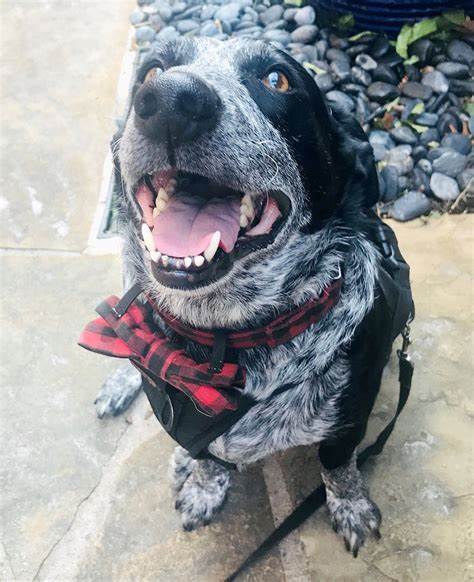- What Are Seizure Alert Dogs?
- Seizure Alert Dogs vs. Seizure Response Dogs
- What Tasks Can a Seizure Dog Be Trained To Perform?
- How Can a Seizure Dog Actually Detect a Seizure?
- Do Seizure Alert and Seizure Response Dogs Have Public Access Rights?
- Who Are the Best Breeds as Seizure Alert Dogs?
- How Much Does It Cost to Get a Seizure Alert Dog?
- Where to Get A Seizure Dog
- Tips Before You Get a Seizure Dog

According to researchers, more than 65 million people around the world have to deal with epilepsy. It is assumed, that approximately 1 in 26 people can develop epilepsy at some point during their lifetime. Epilepsy can be caused by genetic predisposition, injuries, strokes, or brain infection. This disorder may have many symptoms- from confusion to loss of consciousness and inability to control and coordinate movements. As living with epilepsy can be really hard and challenging, a lot of people make the decision to get a service animal. Having a service animal can be really beneficial to individuals with seizure episodes, as they provide assistance and help their handlers to regain their self-esteem and to be able to handle different situations on a daily basis.
What Are Seizure Alert Dogs?
Service animals are individually trained to perform specific tasks for the benefit of people with different kinds of disabilities. A type of service dog you might not be familiar with is the so-called Seizure Alert Dogs.
A Seizure Alert Dog is a type of service dog that is trained to help or assist his/her handler during and/or after a seizure. These animals should be able to detect a seizure that is about to occur and have been trained to notify (alert) their handler about the oncoming event.
We would like to make a clear difference between two terms: a Seizure Alert Dog and a Seizure Response Dog.
Seizure Alert Dogs vs. Seizure Response Dogs
The first type of seizure service dogs: Seizure Alert Dogs, has been trained to warn their handlers about an oncoming seizure. This means that these dogs may be able to predict a seizure before it occurs.
The second type of seizure dogs, the Seizure Response Dogs, have been trained to perform specific tasks for the benefit of an individual, who has already experienced a seizure. Such tasks may include: pressing a button, connected to 911, notifying housemates through barking, that a family member just had a seizure, or providing assistance for the person- as a mobile/balance support or emotional assistance.
What Tasks Can a Seizure Dog Be Trained To Perform?
The tasks that seizure dogs can be trained to perform may vary. We would like to point out some essential ones:
A seizure dog may prevent his/her handler from falling and injuring themselves by standing between the floor and the person and protect them with their body.
A seizure dog may be trained to turn on a special device or an alarm.
A seizure dog can also be trained to lie down next to the person, who has experienced or is experiencing a seizure, as a form of protection.
Barking as a signal and alerting a family member, is another task, very common for this type of service animal.
After the person had a seizure, the response dog can bring them a beverage, medication, the phone, and even open the door.
It is important to note, that despite the comfort and assistance these dogs provide, they can not replace the necessity of medical monitoring, especially during the night.
How Can a Seizure Dog Actually Detect a Seizure?
There is historical evidence that dogs detected seizures on their own. They started to lick, paw, nudge their handler, or whine to notify them about an oncoming seizure. Since seizure episodes may occur repeatedly, dogs manage to recognize certain patterns and clues that are likely to lead to the episode. However, the patterns determined on an individual basis are different. With that in mind, the following question arises:
What might be the “signalizing” factor that dogs are able to pick up as a warning sign for an oncoming seizure?
There is no solid scientific proof that affirms the ability of dogs to anticipate seizures. According to some researches, people, who are going to experience a seizure, may release a specific scent. Since dogs have a really strong sense of smell, they may be able to detect it. There is no specific time frame on when exactly this smell will be released- this can happen a few minutes or an hour prior to the seizure episode. The goal of some organizations that provide training for seizure, dogs is to connect the scent released by the individual with a specific dog’s behavior. A possible way to achieve this goal is:
Connecting the released scent with food so that it can trigger an emotional reaction in the canine any time he/she detects the scent. The scent will become meaningful for the canine, if the process of pairing with the food has been conducted repeatedly, and he/she will start to pay attention to it and ignore factors, considered unimportant. After dogs have already made the connection with the food, the scent can be put in containers. The next step in the training includes making a connection between the dog’s identification behavior and his/her “notifying/alarming” behavior, so that the canine can be able to alert his/her handler anytime he/she detects the scent.
It is an indisputable fact that dogs can be trained to recognize different types of circumstances and respond to them accordingly. Dogs tend to be very good at reading their owners’ emotions and recognizing any behavioral changes. Service dogs can be trained to provide tasks and assistance related to their handler’s specific needs so that they can be able to deal with different situations on a daily basis.
Do Seizure Alert and Seizure Response Dogs Have Public Access Rights?
Since seizure dogs are considered service animals, they must be granted public accommodation rights.
ADA states: “The dog must be trained to take a specific action when needed to assist the person with a disability. For example, a person with diabetes may have a dog that is trained to alert him when his blood sugar reaches high or low levels. A person with depression may have a dog that is trained to remind her to take her medication. Or, a person who has epilepsy may have a dog that is trained to detect the onset of a seizure and then help the person remain safe during the seizure”.
The presence of a service animal may be prohibited only in places and areas with high sterility requirements, like surgery rooms or facilities where food has been prepared. While in public, handlers need to control their service dog, including a seizure alert/response dog, to keep him/her on a leash and monitor his/her behavior at all times to ensure that he/she is non-disruptive and does not cause any damage.
We would like to note that service dogs regulations may be different on a state/province level, and you need to check them carefully.
Who Are the Best Breeds as Seizure Alert Dogs?
Some breeds are considered more suitable as seizure dogs than others, due to their indisputable qualities. We will list some of them.
The Golden Retriever and the Labrador Retriever- these breeds are always in the top positions when it comes to service animals. With their intelligence, a stable temperament, friendly attitude towards people and animals, and perfect scent skills, the representatives of these breeds are able to feel your needs and emotions. They can be trained as excellent seizure alert/response dogs.
The Poodles and the Goldendoodles - The Standard Poodle is large enough to be able to support his/her handler during a seizure episode and save them from injuries. Moreover, Poodles can bring beverages or medication, and they can be trained to open the door or to provide comfort to their handler, just by lying down next to them. The Goldendoodles are a wonderful mixed-breed between the Golden Retrievers and the Poodles, which makes them perfect as seizure alert dogs! These doggies have a great sense of smell, are intelligent, and can be trained to perform physical tasks and emotional support as well.
The Collie - this friendly, loyal and easy-going canine, will help you recover from a seizure by bringing you medication, beverage or anything you need to recover quicker.
The Newfoundland - these canines are perfect for mobility and balance support due to their large size. They will be able to provide great help for individuals in seizure episodes and to protect them from injuries.
How Much Does It Cost to Get a Seizure Alert Dog?
The price to get a trained seizure alert dog may reach $40,000.
Where to Get A Seizure Dog
There are many for-profit and non-profit organizations where you can get a seizure dog. The application process may vary depending on the organization, and sometimes you may need to wait about a year or two to get such a dog.
Tips Before You Get a Seizure Dog
Before getting a seizure dog, or any type of service dog, people should take into consideration their lifestyle and personal needs in order to choose the most suitable breed for them.
Moreover, seizure dogs are working dogs, and they require regular vet visiting, feeding, and exercising to stay physically and emotionally fit.
It is important that all family members understand and respect the role of a seizure dog in the family. They should be familiar with the dog’s training in order to not interrupt it in any way, to comply with the rules established in regard to the dog’s behavior. Getting a seizure dog, especially for providing assistance to children with seizure episodes, is an important decision, that should be made responsible.
Seizure dogs can assist people with epileptic episodes to regain their confidence and be able to do their activities on a daily basis, without being afraid of seizure episodes while in public.














